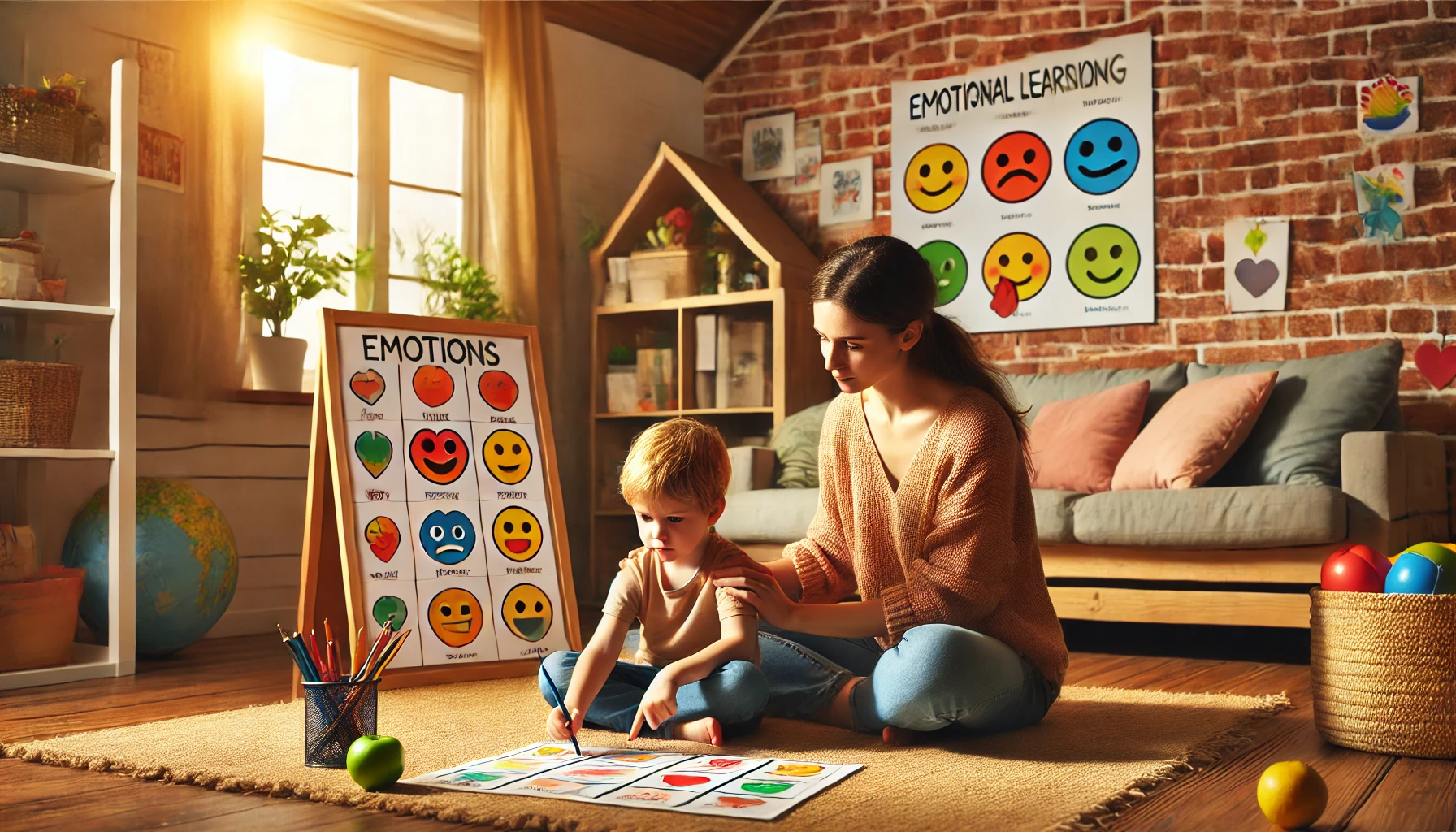Helping young children understand and express their emotions is one of the most important steps in their emotional development. When kids learn how to identify their feelings, regulate their reactions, and communicate effectively, they gain confidence and improve their relationships with others. Teaching emotional intelligence in early childhood lays the groundwork for lifelong mental well-being, empathy, and self-control.
Why Teaching Emotional Skills Matters
- Builds self-awareness – Helps children identify their feelings and understand why they feel a certain way.
- Improves self-regulation – Gives kids tools to calm themselves down or redirect energy.
- Supports social development – Encourages empathy, patience, and cooperation.
- Prevents emotional outbursts – Provides alternatives to tantrums and frustration.
- Fosters healthy communication – Teaches kids to express themselves clearly and respectfully.
1. Help Kids Name Their Emotions
The first step in managing emotions is recognizing them.
Activity Idea:
- Use an emotion chart with faces showing feelings like happy, sad, mad, scared, and excited.
- Ask your child, “What are you feeling right now?” and let them point or say the word.
- Introduce new feelings over time, like “frustrated,” “disappointed,” or “confused.”
What Kids Learn:
- That it’s okay to feel a wide range of emotions.
- How to identify and label feelings.
- How recognizing emotions helps reduce confusion.
2. Use Stories to Talk About Emotions
Books help kids see how others deal with feelings and spark conversation.
Activity Idea:
- Read stories like The Color Monster or When Sophie Gets Angry—Really, Really Angry.
- Ask: “How did the character feel? What helped them feel better?”
- Encourage your child to draw their own story about feelings.
What Kids Learn:
- That everyone has emotions—even story characters.
- How others cope with big feelings.
- That expressing emotions is part of life.
3. Teach Simple Calming Techniques
Having tools to calm down gives kids confidence to manage their emotions.
Activity Idea:
- Practice deep breathing together: “Smell the flower… blow out the candle.”
- Try a “calm jar” filled with glitter and water—watching it settle helps children relax.
- Use gentle stretching or quiet corner time to cool off.
What Kids Learn:
- That they can control how they react.
- How to self-soothe using techniques that feel good.
- That it’s okay to take a break when emotions feel overwhelming.
4. Encourage Expression Through Play and Art
Children often communicate feelings through creative activities.
Activity Idea:
- Set up an “emotion art” station with crayons, paints, and clay.
- Play feelings charades where you act out emotions for each other to guess.
- Use dolls or toys to role-play situations like arguments, sharing, or being afraid.
What Kids Learn:
- That emotions can be shared in more ways than words.
- How to explore feelings in a safe and non-judgmental way.
- That creative outlets can bring comfort and understanding.
5. Model Healthy Emotional Responses
Kids learn emotional behavior by watching adults.
Activity Idea:
- Narrate your own feelings: “I’m feeling a little frustrated, so I’m going to take a deep breath.”
- Share how you calm down: “I had a big feeling today, but I talked about it and now I feel better.”
- Let them see you apologize, reflect, and express positive emotions too.
What Kids Learn:
- That adults have emotions and deal with them too.
- How to respond instead of react.
- That emotional growth is for everyone.
6. Validate Their Feelings, Even When They’re Upset
Children need to feel seen and heard before they can learn to regulate.
Activity Idea:
- Instead of saying, “You’re fine,” try: “I see you’re upset. Do you want to talk or take a break?”
- Avoid minimizing or rushing their feelings.
- Be present and calm so your child feels safe.
What Kids Learn:
- That their emotions are real and worthy of attention.
- How to trust and share their feelings.
- That it’s safe to feel and express what’s inside.
7. Teach That Emotions Are Temporary
Understanding that emotions come and go helps kids handle them better.
Activity Idea:
- Use phrases like: “It’s okay to feel sad now. It won’t last forever.”
- Compare feelings to weather: “Sometimes it rains, but the sun comes back.”
- Track mood changes during the day to show how feelings shift.
What Kids Learn:
- That it’s okay to feel big emotions—they pass.
- How to wait out tough moments.
- That emotional balance is possible.
8. Celebrate Emotional Growth
Recognize progress, no matter how small.
Activity Idea:
- Say: “You used your words instead of yelling—great job handling that feeling!”
- Keep an “Emotion Success” chart where kids earn stars for calm responses or talking about their feelings.
- Reflect: “How did you feel before and after you took deep breaths?”
What Kids Learn:
- That handling emotions is a skill they can grow.
- How good it feels to manage emotions well.
- That their efforts are appreciated and noticed.
Final Thoughts
Teaching young children to handle emotions in a healthy way is one of the greatest investments in their lifelong well-being. By combining emotional language, creative outlets, calming strategies, and patient support, parents can raise emotionally intelligent children who are confident, kind, and capable of facing life’s ups and downs.
